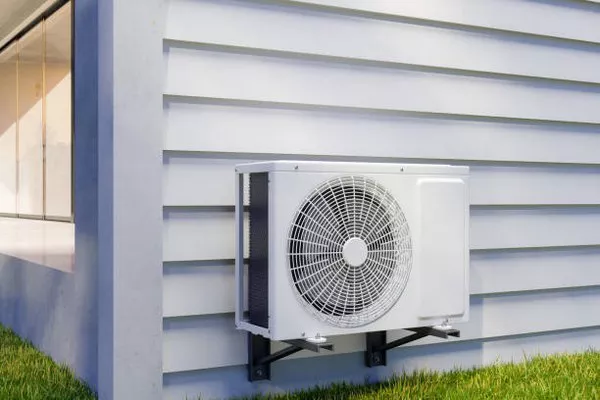In today’s industrial and commercial settings, compressors play a pivotal role in various applications, from refrigeration and air conditioning to manufacturing and energy production. The noise generated by these powerful machines, however, can be a significant concern, both for worker comfort and regulatory compliance. To address this issue, compressor blankets have emerged as a potential solution to dampen noise and improve overall working conditions. But the key question remains: do compressor blankets work? In this article, we will delve into the science behind compressor blankets and explore their effectiveness in mitigating compressor noise.
Understanding Compressor Noise
Compressor noise is a common problem, arising primarily from the mechanical components of the machine itself, such as the motor, fans, and the compression process. The noise generated can be classified into two main categories: airborne noise and structure-borne noise.
Airborne Noise: This is the noise that is transmitted through the air and reaches our ears. It is the most common type of noise associated with compressors and can be particularly disruptive in various settings, from offices to manufacturing plants.
Structure-Borne Noise: This is the noise that travels through the physical structure of the compressor and is then transmitted to surrounding surfaces. It can make the compressor’s vibrations resonate through the floor or walls, amplifying the overall noise level.
Compressor Blankets: An Overview
Compressor blankets, also known as compressor enclosures or compressor noise reduction blankets, are engineered solutions designed to address both airborne and structure-borne noise. These blankets are typically composed of several layers, each serving a specific purpose in noise reduction:
Outer Layer: This layer is usually made of a durable, weather-resistant material that protects the blanket from environmental factors like moisture and UV radiation.
Sound-Absorbing Material: The core of the blanket contains specialized sound-absorbing material, often made of foam or fiberglass, which is designed to absorb and dissipate sound waves.
Sound Barrier: Another layer, often made of mass-loaded vinyl or other dense materials, acts as a sound barrier to prevent noise from escaping the blanket.
Inner Lining: The inner lining helps in minimizing sound reflections within the enclosure and provides an aesthetically pleasing finish.
The Science Behind Compressor Blankets
The effectiveness of compressor blankets lies in their ability to address both airborne and structure-borne noise. Let’s explore the science behind their operation:
Airborne Noise Reduction: The sound-absorbing material within the blanket is crucial in absorbing airborne noise. When sound waves produced by the compressor reach the blanket, the foam or fiberglass absorbs these waves, converting them into heat energy. This process effectively reduces the noise level that escapes the enclosure.
Structure-Borne Noise Reduction: Compressor blankets also help in dampening structure-borne noise. When the blanket is installed around the compressor, it acts as a barrier that disrupts the transmission of vibrations from the compressor to the surrounding structure. This reduces the resonant noise that may otherwise travel through walls or floors.
Do Compressor Blankets Work?
The effectiveness of compressor blankets depends on various factors, including the quality of the blanket, the design of the enclosure, and the nature of the noise source. When properly designed and installed, compressor blankets can significantly reduce noise levels. Here are some key points to consider:
Noise Reduction Levels: Compressor blankets can reduce noise levels by as much as 15 to 30 decibels, depending on the quality of the blanket and the frequency of the noise. This level of noise reduction can be substantial, making compressor blankets a viable solution for noise control.
Regulatory Compliance: In many industrial and commercial settings, there are strict regulations regarding acceptable noise levels. Compressor blankets can help businesses comply with these regulations, avoiding costly fines and ensuring a healthier working environment for employees.
Improved Working Conditions: Beyond regulatory compliance, the reduction in noise levels provided by compressor blankets enhances overall working conditions. Quieter work environments can lead to increased productivity, reduced stress levels, and better employee morale.
Versatility: Compressor blankets are versatile and can be used with various compressor types and sizes. They can be custom-designed to fit specific equipment, making them a practical solution for a wide range of applications.
Cost-Effective: When compared to other noise reduction methods, such as building soundproofed enclosures or using vibration isolation systems, compressor blankets are of ten a cost-effective solution. They require less time and labor for installation and can be quickly retrofitted to existing equipment.
Installation and Maintenance
To ensure the optimal performance of compressor blankets, proper installation and regular maintenance are essential. Here are some key considerations:
Professional Installation: It’s advisable to have compressor blankets installed by experienced professionals who understand the specific requirements of your equipment and noise sources.
Regular Inspection: Periodic inspections of the blankets should be conducted to check for any signs of wear, damage, or degradation. Damaged blankets should be promptly repaired or replaced.
Ventilation: Adequate ventilation is crucial to prevent overheating of the compressor. Ensure that the enclosure allows for proper airflow while maintaining noise reduction.
Conclusion
Compressor blankets are a scientifically proven solution for reducing compressor noise in various industrial and commercial settings. Their effectiveness in mitigating both airborne and structure-borne noise makes them a valuable tool for achieving regulatory compliance, improving working conditions, and enhancing overall productivity. When considering the implementation of compressor blankets, it is essential to work with experienced professionals to ensure proper design, installation, and maintenance. By doing so, businesses can reap the benefits of a quieter and more efficient workplace while addressing the question: “Do compressor blankets work?” with a resounding yes.

